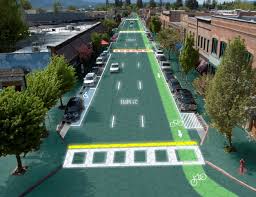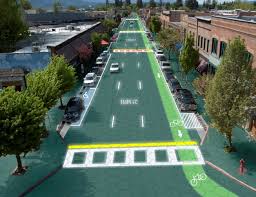
Sweden now has the world’s first electrified road which is capable to recharge the batteries of the vehicles that run on it. the road has been formally opened for public transport.
This is a first step in the national map for future expansion for such roads across the country by the country’s road agency. The road is about 2 kilometers long and has electric rails embedded in it in a section of a public road near Stockholm.
Sweden has set itself a target to eliminating its dependence on fossil fuels by the year 2030 and for that the country would need a reduction of 70 per cent in the transportation sector.
The electric vehicle industry has been facing teething problems related to keeping the vehicle charged enough to continue running as well as reducing the costs for production of batteries and this small stretch of road – which traverses from the Stockholm Arlanda airport to a logistics site outside the capital city, can be the possible solution to those problems of the industry.
The technology entails the transfer of energy from the two tracks or rails embedded on the road to the batteries of vehicles through a movable arm that it connected to the bottom of a vehicle. In case a vehicle connected to the rails overtakes, the arm gets automatically disconnected. Apart from this the technology used is very similar to that of a Scalextric track.
There are three separate section in the electrified road and includes one section that is powered only when vehicles travel above it.
Current gets disconnected when a vehicle comes to a halt. The costs of electricity per vehicles and used is calculated on the basis of the energy consumption of the vehicle by the system.
The technology has shown that the batteries for electric vehicles can be smaller and can be produced at lowered costs because of the dynamic nature of charging of the batteries and vehicles do not require to halt and get connected to a roadside charging post.
The first to use the road was a former diesel-fuelled truck owned by the logistics firm, PostNord.
Advantage of this new technology can be derived by the adaptation of both the current vehicles and roadways, said Hans Säll, chief executive of the eRoadArlanda consortium behind the project.
Sall said that 20000 km of about half a million kilometres of total roadway in Sweden are highways in Sweden.
“If we electrify 20,000km of highways that will definitely be be enough,” he added. “The distance between two highways is never more than 45km and electric cars can already travel that distance without needing to be recharged. Some believe it would be enough to electrify 5,000km.”
It is being touted that compared to the costs of construction of an urban tram line, the cost of electrification is 50 times lower with a cost of about €1m per kilometer.
Säll said: “There is no electricity on the surface. There are two tracks, just like an outlet in the wall. Five or six centimetres down is where the electricity is. But if you flood the road with salt water then we have found that the electricity level at the surface is just one volt. You could walk on it barefoot.”
(Source:www.theguardian.com)
This is a first step in the national map for future expansion for such roads across the country by the country’s road agency. The road is about 2 kilometers long and has electric rails embedded in it in a section of a public road near Stockholm.
Sweden has set itself a target to eliminating its dependence on fossil fuels by the year 2030 and for that the country would need a reduction of 70 per cent in the transportation sector.
The electric vehicle industry has been facing teething problems related to keeping the vehicle charged enough to continue running as well as reducing the costs for production of batteries and this small stretch of road – which traverses from the Stockholm Arlanda airport to a logistics site outside the capital city, can be the possible solution to those problems of the industry.
The technology entails the transfer of energy from the two tracks or rails embedded on the road to the batteries of vehicles through a movable arm that it connected to the bottom of a vehicle. In case a vehicle connected to the rails overtakes, the arm gets automatically disconnected. Apart from this the technology used is very similar to that of a Scalextric track.
There are three separate section in the electrified road and includes one section that is powered only when vehicles travel above it.
Current gets disconnected when a vehicle comes to a halt. The costs of electricity per vehicles and used is calculated on the basis of the energy consumption of the vehicle by the system.
The technology has shown that the batteries for electric vehicles can be smaller and can be produced at lowered costs because of the dynamic nature of charging of the batteries and vehicles do not require to halt and get connected to a roadside charging post.
The first to use the road was a former diesel-fuelled truck owned by the logistics firm, PostNord.
Advantage of this new technology can be derived by the adaptation of both the current vehicles and roadways, said Hans Säll, chief executive of the eRoadArlanda consortium behind the project.
Sall said that 20000 km of about half a million kilometres of total roadway in Sweden are highways in Sweden.
“If we electrify 20,000km of highways that will definitely be be enough,” he added. “The distance between two highways is never more than 45km and electric cars can already travel that distance without needing to be recharged. Some believe it would be enough to electrify 5,000km.”
It is being touted that compared to the costs of construction of an urban tram line, the cost of electrification is 50 times lower with a cost of about €1m per kilometer.
Säll said: “There is no electricity on the surface. There are two tracks, just like an outlet in the wall. Five or six centimetres down is where the electricity is. But if you flood the road with salt water then we have found that the electricity level at the surface is just one volt. You could walk on it barefoot.”
(Source:www.theguardian.com)





